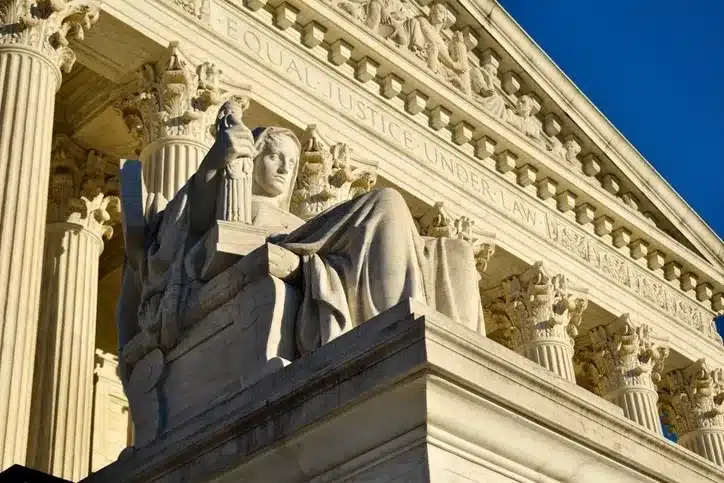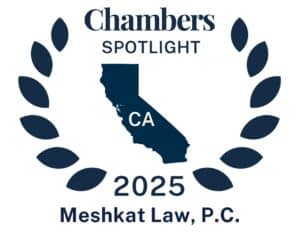For better or worse, the U.S. Supreme Court has overruled Chevron v. Natural Resources Defense Council (“Chevron”), which for the last 40 years has provided many U.S. government agencies with significant leeway in interpreting the statutes they administer. One agency that perhaps didn’t bat an eye when the Court’s decision in Loper Bright Enterprises v. Raimondo (“Loper”) laid Chevron to rest, was the U.S. Department of the Treasury’s Office of Foreign Assets Control (“OFAC”), which administers U.S. economic sanctions laws and regulations. Historically, the agency has for the most part come out unscathed from a plethora of judicial disputes challenging OFAC’s agency actions on a range of issues under the Administrative Procedure Act (“APA”), where courts have adamantly deferred to the agency, and not just because Chevron made them do it.
As examined in this article, especially in view of prior judicial precedent involving Chevron deference and OFAC’s actions, a post-Chevron world is not likely to alter OFAC’s judicial status quo. However, there are certain parts of its overall sanctions regime that are now more exposed, which are assessed below.
Relevant Background on Loper and Chevron
The APA prescribes not just procedures for agency actions (e.g., rules, licenses, orders, etc.), 5 U.S.C. §§ 500-596, but also the maxims for judicial review of such actions in 5 U.S.C. § 706. Specifically, § 706 mandates in pertinent part that “[t]o the extent necessary to decision and when presented, the reviewing court shall decide all relevant questions of law, interpret constitutional and statutory provisions, and determine the meaning or applicability of the terms of an agency action.” Furthermore, in doing so the reviewing court must “hold unlawful and set aside agency action, findings, and conclusions found to be [any one of the following]:”
- § 706(2)(A)—arbitrary, capricious, an abuse of discretion, or otherwise not in accordance with law;
- § 706(2)(B)—contrary to constitutional right, power, privilege, or immunity;
- § 706(2)(C)—in excess of statutory jurisdiction, authority, or limitations, or short of statutory right;
- § 706(2)(D)—without observance of procedure required by law;
- § 706(2)(E)—unsupported by substantial evidence in cases subject to sections 556 and 557 of the APA or otherwise review on the record of an agency hearing provided by statute; or
- § 706(2)(F)—unwarranted by the facts to the extent that the facts are subject to trial de novo by the reviewing court.
In Loper, the Court disagreed with Chevron’s interpretation of these maxims and the resulting deference it required of courts reviewing agency actions, by taking a very literal and traditionalist view of the APA: “[t]he text of the APA means what it says,” See, Loper at pp. 13-18. According to the Court, the APA had codified judicial practice dating back to its landmark 1803 decision in Marbury v. Madison, upended by Chevron during the course of its relevance, by specifying that “…courts not agencies, will decide all relevant questions of law arising on review of agency action—even those involving ambiguous laws and set aside any such action inconsistent with the law as they interpret it.” See, Loper at p. 14 (internal citations omitted). Moreover, “[the APA] prescribes no deferential standards for courts to employ in answers those legal questions.” Id.
On a side note, the Court in Loper did indicate in view of §§ 706(2)(A) and (E) detailed above, that the APA still mandates that judicial review of agency policy making and fact finding to still be deferential, which will likely leave a lot of OFAC-related judicial precedent intact that I’m not going to get into here for the reasons I note further below. Id.
According to Loper (p. 19), in Chevron the Court had formulated a faulty two-step approach for statutory interpretation in reviewing agency action under § 706:
- Step 1—Discern whether Congress had directly spoken to the precise question at issue by employing traditional tools of statutory construction. If yes, then end of story and any administrative constructions that were contrary would be rejected. If not, proceed to Step 2.
- Step 2—Where the statute is silent or ambiguous with respect to the specific issue at hand, defer to the agency if it had offered a permissible construction of the statute. Deference would be given to the agency’s construction, regardless of whether the reviewing court would have reached a different construction by employing its own traditional tools of statutory construction.
Loper disagreed with Chevron’s formulation of Step 2, and instead holds that where the statute is silent or ambiguous, the reviewing court must employ the traditional tools of statutory construction in resolving it, regardless of whether the ambiguity implicates a technical matter that is within an agency’s own subject matter expertise. “Congress expects courts to handle technical statutory questions.” Loper at p. 24. Although the reviewing court may benefit from an agency’s expertise and it is informative, it doesn’t bind the reviewing court as Chevron had presumably required. Id.
The President’s Extensive Economic Sanctions Powers
OFAC’s sanctions regime is primarily predicated on the International Emergency Economic Powers Act (“IEEPA”), which gives the President extensive emergency powers whenever he declares a national emergency, “…to deal with any unusual and extraordinary threat, which has its source in whole or substantial part outside the United States, to the national security, foreign policy, or economy of the United States…” In short, these immense IEEPA powers from Congress include far reaching investigative, regulatory, prohibitive, blocking authority over a plethora of transactions and property interests specified in 50 U.S.C. § 1702(a) that are subject to U.S. jurisdiction (another immensely broad concept), involving such threats (e.g., Iran, Russia, Syria, etc.) that are unilaterally identified by the President. Unlawful acts under IEEPA—which are incorporated into most OFAC sanctions programs—include for a person to violate, attempt to violate, conspire to violate, or cause a violation of any license, order, regulation, or prohibition issued under the President’s broad authority. See, 50 U.S.C. § 1705.
Chevron Deference Involving OFAC: A Brief History
Judicial precedent involving challenges to OFAC agency actions under the APA and Chevron deference begin with the D.C. Circuit Court of Appeals’ decisions in Consarc Corp. v. Iraqi Ministry in 1994 (“Consarc I”) and Consarc Corp. v. OFAC in 1995 (“Consarc II”). In Consarc I, the court had reasoned that OFAC’s application of its own regulations receives an even greater degree of deference than the Chevron doctrine, and must prevail unless plainly inconsistent with that regulation. In this article, I don’t examine this specific rendition of the Chevron doctrine that is strictly related to an agency’s application of its own regulations, without any statutory ambiguity lurking behind it (a worthy topic of examination however). In Consarc II, in referring to the expansive statutory grant of power under IEEPA, and in view of Chevron deference, the court reasoned that OFAC’s interpretation of its own regulation must either demonstrate that the statute clearly forbids the agency’s interpretation (i.e., Step 1) or that the interpretation is unreasonable (i.e., Step 2).
By introducing the Chevron doctrine to the realm of APA challenges involving OFAC, the Consarc cases were relied upon by courts as precedent in numerous instances to defer to the agency’s actions when facing claims of statutory ambiguity. However, in many such cases it is not readily apparent if the lack of Chevron’s two-step approach would have made a difference in the respective outcome, especially since the immense unilateral powers bestowed by Congress upon the President under IEEPA leave little room for ambiguity to begin with. For example, in United States v. Lindh, a criminal defendant had argued that OFAC’s regulations that he was charged with violating exceeded IEEPA’s statutory grant of power. The court’s analysis of the issue essentially stopped with Step 1 of Chevron after reasoning through IEEPA’s language related to the President’s sanctions powers, stating that “[t]his language manifestly sweeps broadly, as courts have consistently recognized in according deference to various sanctions programs under IEEPA and TWEA [the ‘Trading with the Enemy Act,’ IEEPA’s predecessor and the statutory basis for OFAC’s current Cuba sanctions program].” The court further reasoned that “…the same result would obtain even were the IEEPA deemed ambiguous” (i.e., had it proceeded to Step 2 of Chevron analysis).
Post-Chevron Risks for OFAC
Although the Court in Loper overruled Chevron, it reiterated that under the principles of stare decisis, prior decisions relying on Chevron remain good law. Loper at p. 34. Nevertheless, it remains to be seen how any similar future APA challenges to OFAC’s actions may pan out without Chevron deference for allegations of statutory ambiguity. As discussed above, given the broad sanctions powers granted to the President under IEEPA, reviewing courts can resolve many issues in favor of OFAC without ever considering ambiguity as to the statute. Even post-Chevron, reviewing court’s are still likely to give great weight to OFAC’s technical expertise when conducting any statutory construction in the face of ambiguity.
Furthermore, other judicial doctrines related to foreign affairs and national security, including the political question doctrine, could enable OFAC to to maintain its status quo before the courts. However, at least with regard to the political question doctrine, the agency should take heed from one court’s reasoning in a prior judicial challenge to a blocking action, cautioning the agency that, “[t]he Supreme Court has long held that it is error to suppose that every case or controversy which touches foreign relations lies beyond judicial cognizance.” See, Milena Ship Management Co. v. Newcomb (internal citations omitted).
Statutory Exemptions
One arena of OFAC administered laws and regulations that is arguably most at risk with the overruling of Chevron, are the statutory exemptions that apply to many of its sanctions programs. These exemptions were enacted after IEEPA, carving away from the otherwise immense sanctions powers Congress had initially bestowed upon the President. This naturally leaves more room for legislative ambiguity—as opposed to the initial grant of broad authority under IEEPA—and courts having to discern the Congressional intent behind them (i.e., what did Congress intend to take back?).
In 1988, Congress exempted “informational materials” from the President’s otherwise extensive sanctions authority under IEEPA, codified in 50 U.S.C. § 1702(b), and section 5 of TWEA. Known as the “Berman Amendment,” it specifically removed from the President’s purview the authority to regulate or prohibit, directly or indirectly, transactions related to informational materials. In response to the Berman Amendment and an expanded limitation by Congress in 1994 under the Free Trade in Ideas Act (“FTIA”), OFAC has amended to exempt such transactions, but generally with its own narrow view of what constitutes “informational materials” and qualifies for the exemption.
In several judicial challenges involving OFAC’s application of this exemption, the reviewing courts applied Chevron deference in reasoning that OFAC’s interpretation was a permissible construction of the statute (i.e., Step 2). See e.g., United States v. Griffith (“The Court concludes that OFAC’s interpretation of the information exception is permissible”); United States v. Ali Amirnazmi (“OFAC’s interpretation of IEEPA’s informational-materials exemption is based upon a permissible construction of the statute) (internal citations omitted); Capital Cities/ABC v. Brady (“…since neither the Berman Amendment nor its legislative history is clear as to make judicial deference inappropriate, the Court must defer to OFAC’s interpretation…”). With Step 2 of Chevron now off the table, would the reviewing court still resolve any statutory ambiguity in relation to the informational materials exemption of IEEPA in the same manner as OFAC?
Similar exposure for OFAC likely exists under other statutory exemptions to the President’s IEEPA or TWEA sanctions authority, such as travel or those related to food, medicine, and medical devices under the Trade Sanctions Reform and Export Enhancement Act of 2000 (“TSRA”).
Non-IEEPA and TWEA Sanctions Statutes
Non-IEEPA and TWEA based sanctions programs administered by OFAC are also arguably at higher-risk for reviewing courts to rely on their own tools for statutory construction in a post-Chevron world, and without necessarily buying into the agency’s expertise. For example, the Foreign Narcotics Kingpin Designation Act (“Kingpin Act”) carved out IEEPA-like sanctions powers for the President to impose blocking sanctions on persons identified to be engaging in certain specified conduct related to international narcotics trafficking. Congressional intent for such powers in this context is much more limited than under that of IEEPA, as it is specific to only one specified threat (i.e. narcotics trafficking).
To illustrate, in a 2022 judicial challenge involving a designation under the Kingpin Act before the D.C. District Court, Bello v. Smith, the court specifically moved to Step 2 of Chevron but ultimately agreed with and deferred to OFAC’s interpretation of the statute to knock down a purported temporal requirement for designations that had been argued by the Plaintiff designated party. Would the court have reasoned and concluded the same without Chevron deference? Perhaps we’ll never know since the President expanded his authority beyond the Kingpin Act to combat the global illicit drug trade with sanctions by issuing E.O. 14059 under IEEPA, bypassing the narrower authority bestowed to him under the Kingpin Act.
Final Thought
The overruling of Chevron by the Supreme Court is unlikely to tip the scales much in favor of prospective litigants seeking to challenge OFAC’s agency actions. Nevertheless, the agency will need to reckon with the new reality that it has one less arsenal at its disposal in protecting its otherwise historically well-insulated and unfettered discretion.
The author of this blog post is Kian Meshkat, an attorney specializing in U.S. economic sanctions and export controls matters. If you have any questions please contact him at meshkat@meshkatlaw.com.







